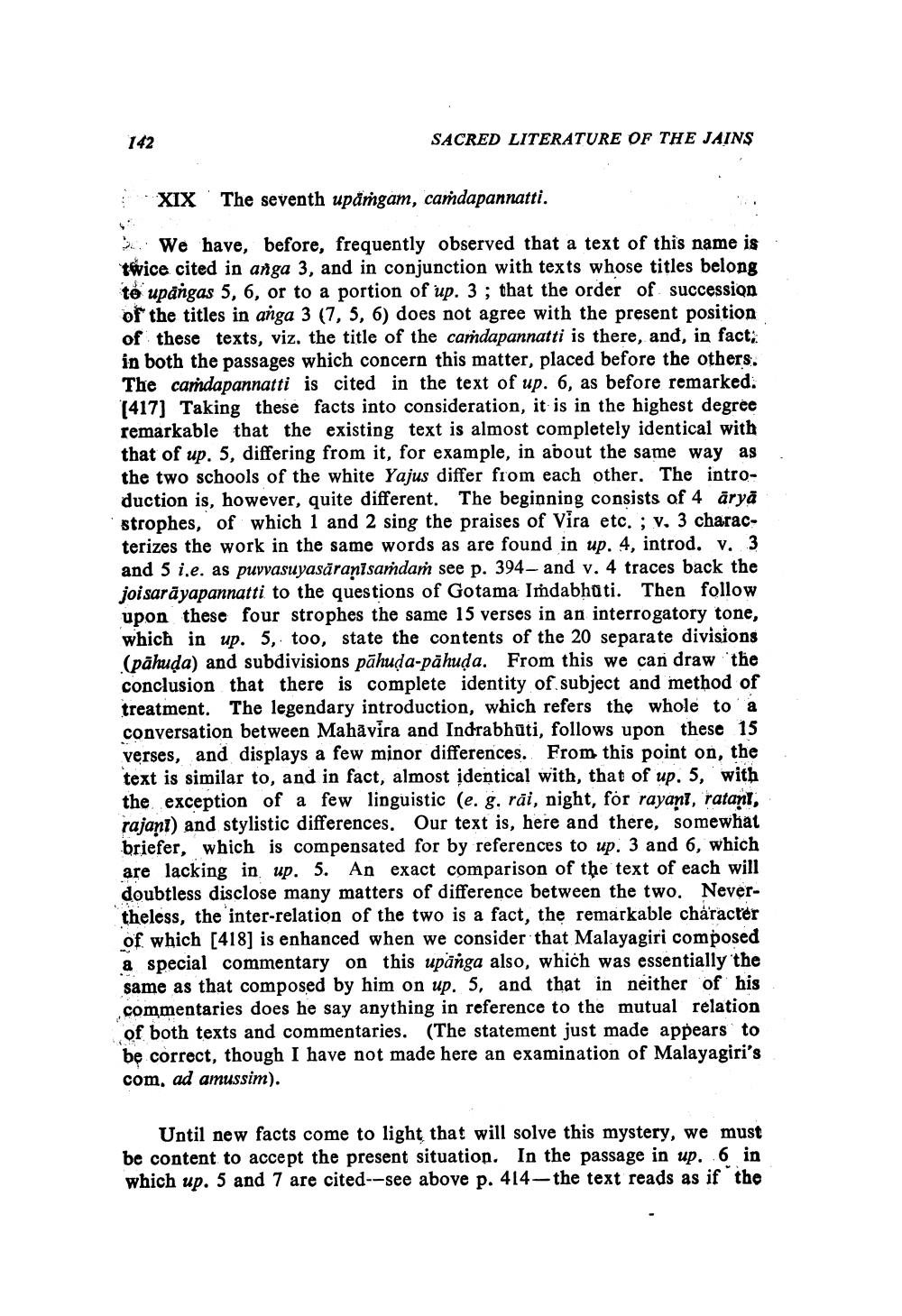________________
142
SACRED LITERATURE OF THE JAINS
XIX
The seventh upäṁgam, camdapannatti.
. We have, before, frequently observed that a text of this name is twice cited in anga 3, and in conjunction with texts whose titles belong té upangas 5, 6, or to a portion of up. 3; that the order of succession of the titles in anga 3 (7, 5, 6) does not agree with the present position of these texts, viz. the title of the camdapannatti is there, and, in fact, in both the passages which concern this matter, placed before the others. The caídapannatti is cited in the text of up. 6, as before remarked. (417] Taking these facts into consideration, it is in the highest degree remarkable that the existing text is almost completely identical with that of up. 5, differing from it, for example, in about the same way as the two schools of the white Yajus differ from each other. The introduction is, however, quite different. The beginning consists of 4 āryā strophes, of which 1 and 2 sing the praises of Vira etc. ; v. 3 characterizes the work in the same words as are found in up. 4, introd. v. 3 and 5 i.e. as puvvasuyasăranisaṁdaṁ see p. 394- and v. 4 traces back the joi sarāyapannatti to the questions of Gotama Iṁdabhūti. Then follow upon these four strophes the same 15 verses in an interrogatory tone, which in up. 5, too, state the contents of the 20 separate divisions (pāhuda) and subdivisions pāhuda-pähuda. From this we can draw the conclusion that there is complete identity of subject and method of treatment. The legendary introduction, which refers the whole to a conversation between Mahavira and Indrabhuti, follows upon these 15 verses, and displays a few minor differences. From this point on, the text is similar to, and in fact, almost identical with, that of up. 5, with the exception of a few linguistic (e. g, rãi, night, för rayant, ratant, rajani) and stylistic differences. Our text is, here and there, somewhat briefer, which is compensated for by references to up. 3 and 6, which are lacking in up. 5. An exact comparison of the text of each will doubtless disclose many matters of difference between the two. Nevertheless, the inter-relation of the two is a fact, the remarkable character of which [418] is enhanced when we consider that Malayagiri composed a special commentary on this upānga also, which was essentially the same as that composed by him on up. 5, and that in neither of his commentaries does he say anything in reference to the mutual relation of both texts and commentaries. (The statement just made appears to be correct, though I have not made here an examination of Malayagiri's com, ad amussim).
Until new facts come to light that will solve this mystery, we must be content to accept the present situation. In the passage in up. 6 in which up. 5 and 7 are cited--see above p. 414- the text reads as if the




